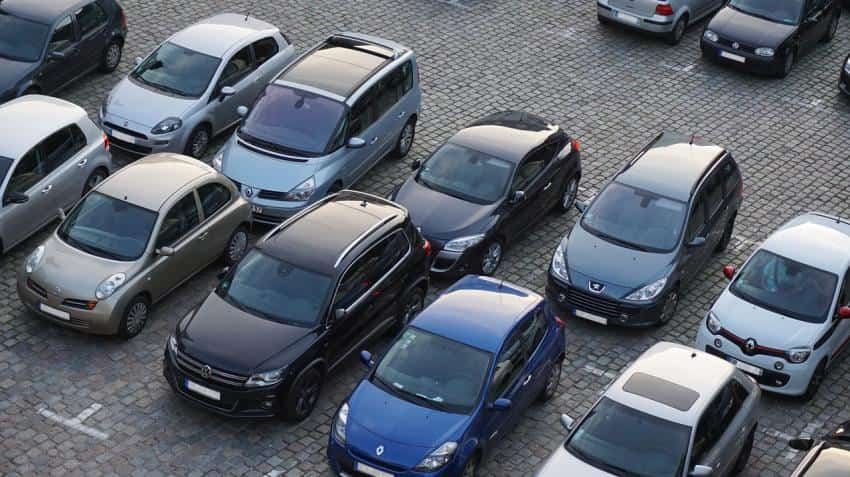Hike in GST cess on larger passenger vehicles could derail demand momentum: ICRA
While the passenger vehicle market is expected to grow by a healthy 9-10% in India during FY18, the increase in the cess by the GST Council poses a challenge to this growth.

Key highlights:
- Impending increase in cess from 15% to 25% on larger vehicles poses challenge, says ICRA
- Passenger vehicle industry will grow by a healthy 9-10% during FY18
- The price cut post GST had aided the growth in the passenger vehicle segment
The passenger vehicle industry will grow by a healthy 9-10% during FY18 and between 9-11% at a Compounded Annual Growth Rate (CAGR) over the next five fiscals.
However, the GST Council's decision to increase in the cess on passenger vehicles over 4 metres to 25% from 15% poses a challenge and could derail demand momentum in the interim, according to a recent ICRA report.
“Impending increase in cess from 15% to 25% on larger vehicles poses challenge and could derail demand momentum in the interim,” said the report.
It further said that the price cut post GST had aided the growth in the passenger vehicle segment. The demand in July 2017 registered healthy growth riding on recovery in domestic wholesale dispatches, underlying robust demand drivers and inventory re-stocking by dealers.
It further said that the outlay for 7th pay commission and the relative high levels of financing penetration in this industry compared to other sub-groups like two-wheelers supported demand momentum despite demonetisation related impact in Q3FY17.
“Passenger vehicle sales could have registered healthy growth in Q1 FY18 as well but impending GST and subsequent pricing uncertainty fizzled out wholesale demand in June 2017. Also, dealers were busy clearing inventory as tax off-set was not available for certain components,” ICRA said.
It further said that the Indian passenger vehicle industry is likely to consolidate further on its growth path for the fourth year in a row since FY2014, the year when it last witnessed a blip.
Another key area was double digit export growth (+13.8%) during Q1FY18; the same contributed about 20% of total wholesale volume sales during FY17 and Q1FY18, with Ford, General Motors and Volkswagen emerging as the key growth drivers, it adds.
Ford registered the highest of export growth at 54.4% in volume during Q1FY18, with it passenger vehicle car segment (Figo/Aspire) doubling growth, whereas Ecosport (UV) volume grew by 16%. PV exports growth may be healthy in the medium term with Suzuki’s and Ford’s Gujarat units becoming operational and FCA’s Jeep exports plan to all right hand drive market.
Subrata Ray, Sr Group Vice President, Corporate Sector ratings, ICRA says, “Industry’s long-term prospects remain favourable given the low penetration levels and increasing disposable income. The overall macroeconomic indicators too remain favourable with GDP growth expected at 7.2% in FY18e, normal monsoon expectations which will boost rural income and the price cut post GST that will provide impetus to the industry. This apart, the low cost of car ownership due to falling interest rate and subdued fuel prices will help.”
ICRA expects the utility vehicles (UV) segment to outperform overall industry growth in the near to medium term given shift in customer preference towards UVs and influx of new models.
As compact UVs are generally priced close to mid-sized cars, the mid-sized segment is facing stiff pressure and some demand shift. The compact cars and super compact segment too are witnessing some cannibalisation from entry level compact UVs.
On what could possibly impact credit profile of PV manufactuers, Ray mentions, “Overall continuing modest capacity utilisation levels, even though statistics vary significantly across OEMs. A few multinational OEMs have already started using Indian operations as an export hub for small cars thereby raising utilisation levels. But industry profitability metrics will remain unchanged despite improving sales growth. Expected new product development costs, employee expenses and unsustainable discounts-led sales push due to limited pricing power given the intense competition will be the reasons. Besides rising commodity prices witnessed recently will restrict medium term profitability margins.”
The cumulative 80% market share of the top five players should unchange in the medium term. Low volume players who face profitability pressures may resort to leveraged capital or financial support from parent company to fund losses and capex requirements. However they will be able to offset these by capitalising on labour arbitrage in the Indian market and focussing on realigning their domestic facilities as an export hub for their small cars globally.
ALSO READ:
Get Latest Business News, Stock Market Updates and Videos; Check your tax outgo through Income Tax Calculator and save money through our Personal Finance coverage. Check Business Breaking News Live on Zee Business Twitter and Facebook. Subscribe on YouTube.
03:39 PM IST











 Why hike in GST cess on luxury cars may dent investment, auto jobs in India
Why hike in GST cess on luxury cars may dent investment, auto jobs in India Luxury car makers voice disappointment over GST Council's increase in cess
Luxury car makers voice disappointment over GST Council's increase in cess India's plan for higher rate luxury car tax to hit sales: Mercedes-Benz
India's plan for higher rate luxury car tax to hit sales: Mercedes-Benz SUVs, luxury cars to get expensive as GST Council recommends hike in cess to 25%
SUVs, luxury cars to get expensive as GST Council recommends hike in cess to 25%